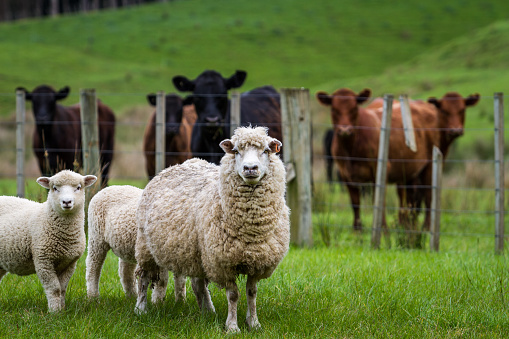



Article by: Hari Yellina
If you possess or lease a piece of property in Australia and want to make a fair livelihood from it, you’ll need to think carefully about the business(es) you want to start. It’s not always evident. However, what if you had the option? Let’s take a look at the livestock options: sheep or cattle. To begin with, the average sheep flock will be more profitable in the long run than the typical beef herd. There may be years when this isn’t the case, but on average, over a period of 20 to 30 years, it is. Most importantly, you must be enthusiastic about the livestock you choose.
Passion is frequently joined by dedication and management competence, both of which are necessary components of a very lucrative business. There’s nothing wrong with running both, as long as the flock and herd are both large enough to merit their own enterprise classification and you have the necessary expertise to run both efficiently. It is best to specialise on one business if the property’s carrying capacity was less than 20,000 DSEs (2,400 AEs). In fact, serious specialists always make more money.
So you’ve made your decision; sheep, cattle, or a combination of the two. Let’s start with sheep, where you can choose between wool and meat animals. Please don’t fool yourself into thinking that you can win with two-bob each way. Sheep are experts, and so should their owners. They either raise sheep for wool or cattle for meat. The worst fault you can commit is to think of oneself as primarily a wool grower while also selecting for carcase qualities.
On maintenance feed, wool growth is most efficient. Take, for example, the humble wether. Keep it lean, maybe a condition score of 2.5, and your wool production will skyrocket. Stocking rate must fall if it is increased to CS 3.0 to 3.5. Because too much of the available dry matter is required to maintain CS, wool produced per hectare will be phased out. The same applies to flock fertility, which is not a profit driver in wool growing flocks beyond that required for the flock to self-replace. Chase it if you will, but consider this. If you jump from 70 per cent lambs weaned to 90pc, you will have to sell adult sheep to make room for the additional weaners, assuming you are optimally stocked.
The ability of your country to reliably put kilos on growing animals (at least 150kg/yr) and your ability to manage pasture and risk should be the primary determinants of whether you run a breeding or growing (called trading) operation. Breeders and dealers have quite different attitudes. Breeders must be stable and patient, whereas traders must think quickly and be more risk tolerant. The qualities of a high-performing beef business apply to all types of businesses. They have higher productive herds, better focused and effective herd expenditure, more efficient labour utilisation, and sufficient operating size. It is so easy to move into a different world where a beef herd can actually generate serious wealth if you mould it that way.